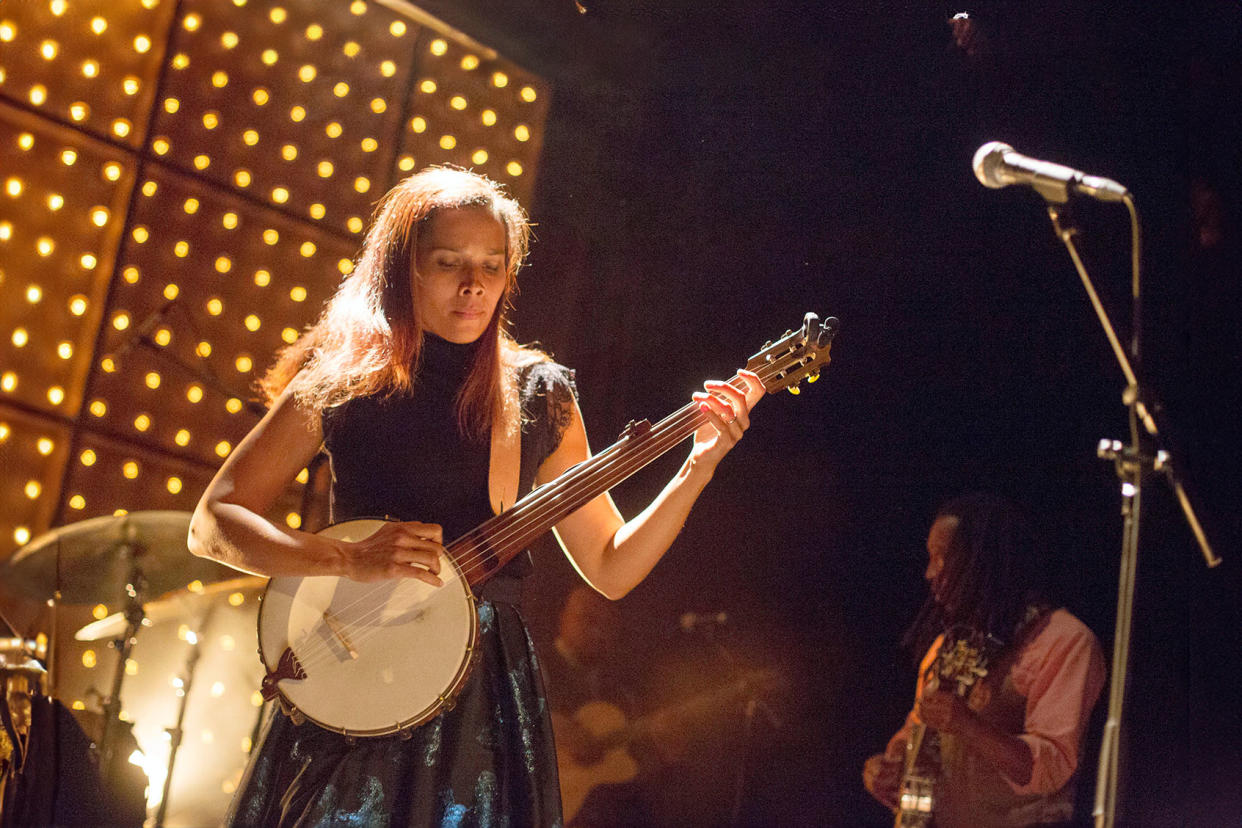The Black origins of the banjo in country music

Beyoncé's surprise new country album has kicked open the saloon doors to a new audience.
While this may not be Beyoncé's first rodeo when it comes to country music, people are now exploring the genre through her two new songs "16 Carriages" and "Texas Hold 'Em." The latter is a banjo-heavy ode to the singer's home state of Texas, and seems to be already causing controversy due to an Oklahoma country music station refusing a request to play the song because Beyoncé is not traditionally seen as a country artist. The station reneged eventually caved after receiving backlash from Beyoncé's unrelenting fans, but the incident has shed light on the larger misunderstanding of country music's origins.
In the song "Texas Hold 'Em," Beyoncé features live banjo and viola playing by Black country musician Rhiannon Giddens, who has been credited for highlighting that Black people created and played the banjo before it was popularized and appropriated by white country artists. So, there's no way to confuse Beyoncé's new era as anything but country especially if songs like "Texas Hold 'Em" heavily feature a historically Black southern instrument like the banjo.
However, the banjo's history within roots music is as loaded and complex as the U.S.' relationship with race because they are both inextricably intertwined. Long before the banjo was considered a staple instrument in mainstream country music, it went through several iterations, but it always had been deeply connected to the Black experience.
African lutes, the banjo's predecessor, were documented to be used in early 16th century West Africa in countries such Gambia, Senegal and Guinea-Bissau. Still used today by West Africans, the instrument's main parts are a gourd, and a stick attachment and a bridge for its three to four strings, paralleling a modern banjo. It is also tuned just like a banjo and similarly played by hand, The Black Music Project reported.
At the height of the transatlantic slave trade, abducted Africans were brought to the Caribbean islands first before they were forcibly taken to the American South. It's in these two regions where enslaved people created iterations of instruments that mimicked the ones in their native land to keep the tradition alive during the brutality and subjugation of slavery, The Smithsonian said. Early versions of the banjo were reportedly used in Jamaica in 1687.
Despite the horrific and complex system of slave labor camps, plantations and rural and urban settings — enslaved Africans musical traditions and instruments were upheld and passed down by generations. However, the banjo's creation eventually became a blending between West African and European traditions mostly due to minstrel shows in the 1800s. The instrument was first reported in the U.S. in 1736 and eventually by the 1800s it had its way to New England.
The banjo became the backbone of American roots music and culture through minstrelsy — white America's most popular form of entertainment in the early 1800s – in which white performers blackened their faces and performed as exaggerated versions of enslaved Africans on plantations, cementing a grotesque caricature of Black people in white American society. In these images, these caricatures were seen playing banjos.
White minstrel performers like Joel Walker Sweeney were credited with popularizing the instrument that inspired a vital part of popular music in the country seen as "hillbilly" music. But this couldn't have be done without the help of formative Black banjoists like Scott Joplin, Horace Weston, the Bohee Brothers, Hosea Eason and James Bland. In the 20th century, white artists like Earl Scruggs, who popularized the bluegrass genre were largely seen as banjo virtuosos for their unique playing style. Currently, the four-five string banjo is the product of the influence of many different groups of people and regions just like how American roots music has inspiration from Scots-Irish and Appalachia roots too alongside its Black influences.
Sadly, despite the banjo's origins, Black artists have slowly lost their ties to the instrument. But in the 21st century, Black folk-blues banjoists like Amythyst Kiah, Taj Mahal, Allison Russell, Otis Taylor and Giddens are reviving banjo playing in popular music, The African American Registry said.
In an interview with Variety last year, Giddens said that learning the banjo's Black roots was even a surprise to her. "That shifts your whole view of what we’ve been told about American music. If the very foundation of what we’ve been told is as wrong as it is, what does that mean for everything that’s built on top of it?"
She continued, "History isn’t simple — especially American history, which is super complicated because of the way that America came to be and the amounts of different cultures that mixed and mingled, and the economic juggernaut that was slavery.
"The banjo is existing in this world. And I guess what I want people to understand is that you can’t talk about the banjo without talking about slavery," she said. "You have to talk about slavery, you have to talk about minstrelsy, you have to talk about the segregation of American music."
Check out Giddens' banjo playing on "Texas Hold 'Em":
